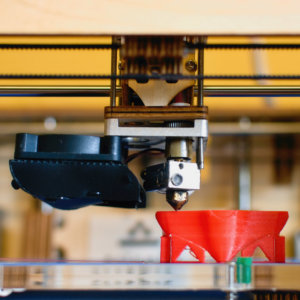The Killer App for 3D Printing? The Circular Economy
3D printing has the potential to alter how we use — and reuse — materials.
Topics
Leading Sustainable Organizations
3D Printing, the additive manufacturing process that “prints” objects, is a classic disruptive technology looking to go mainstream. It has been around for some time — it was originally developed in the 1980s — but until recently it has been limited to costly industrial manufacturing applications. That changed in the late 2000s when 3D printing was taken up by the open-source and do-it-yourself movements. Then cheap desktop 3D printers produced by companies like Makerbot started appearing in workshops and college laboratories around the country. But even with the explosion in interest and investment, 3D printing remains a niche and hobby product.
What 3D printing needs is a “killer app” — a use so valuable that it mainstreams a technology, like spreadsheets were for PCs and email was for the Internet. My favorite candidate is the circular economy.
When I was researching cradle-to-cradle business models for my 2010 book Earth, Inc., I envisioned a manufacturing system that worked like our only sustainable production model: the earth’s biosphere. The biosphere is sustainable thanks to a few core principles. The first of these is materials parsimony, meaning that a minimum number of material types are employed in production. The biosphere, for example, uses only four kinds of matter — carbon, hydrogen, oxygen, and carbon — to produce over 90% of every organism on the planet. Next is power autonomy, the idea that energy needs for production are generated locally and renewably, just as a tree taps into renewable solar power to manufacture blossoms in spring. Finally, there is value cycling, the principle that old products are up-cycled into equal- or higher-value applications. These three principles are why a creature like a rabbit can be biologically broken down and sustainably reassembled into a cactus, fish, or even another rabbit.
The amazing thing is that 3D printing can employ all three of these principles, setting the foundation for a viable circular economy. 3D printing’s additive manufacturing approach means that a single plastic polymer can be used to create a nearly infinite number of forms, fulfilling the principle of materials parsimony. Next, the recent development of a


Comment (1)
Nik Zafri Abdul Majid